One of the wonders in the era of re-appreciating the classic era of golf course architecture is the touch of mystery that lurks behind much of it. Documentation has been lost on most of the world’s most acclaimed golf courses, and dedicated devotees are always digging to get back what was lost.
George Bahto was among the best of them, and was held among the foremost academics on C.B. Macdonald. His book, The Evangelist of Golf, is often the first step in an education on Macdonald’s template system, and their place at the National Golf Links of America.
We’ve come to accept Bahto’s answers — as well as those from numerous experts — as concrete. Should we? No doubt, Bahto put the work in…but an extreme lack of first-hand sources means nothing is infallible. The Evangelist info on the “Bottle” template is not a clear example of this. After all, Macdonald himself described what the origin of the concept was. But if I may be so bold…I’d argue — as someone who frequently and subconsciously chooses to misremember — that Macdonald may be guilty of the same.
Here I argue, dangerously, that our accepted understanding of the “Bottle” has long been misled by none other than Macdonald’s own words. It’s a proposal that can’t be proven…but there’s evidence it’s not a throwaway theory either.

Subtext is also important.
THE BOTTLE
Let’s start with a refresher on The Bottle as a template, as seen at Macdonald’s NGLA.
The 400-yard Par 4 requires the most essential choice immediately from the teebox: Take the safer route right, or try to hit upward and cross a diagonally-cutting run of bunkers to reach a peninsular stretch of fairway on the far side of the fairway. As you would guess from Macdonald, the latter play offers a better angle to the green.
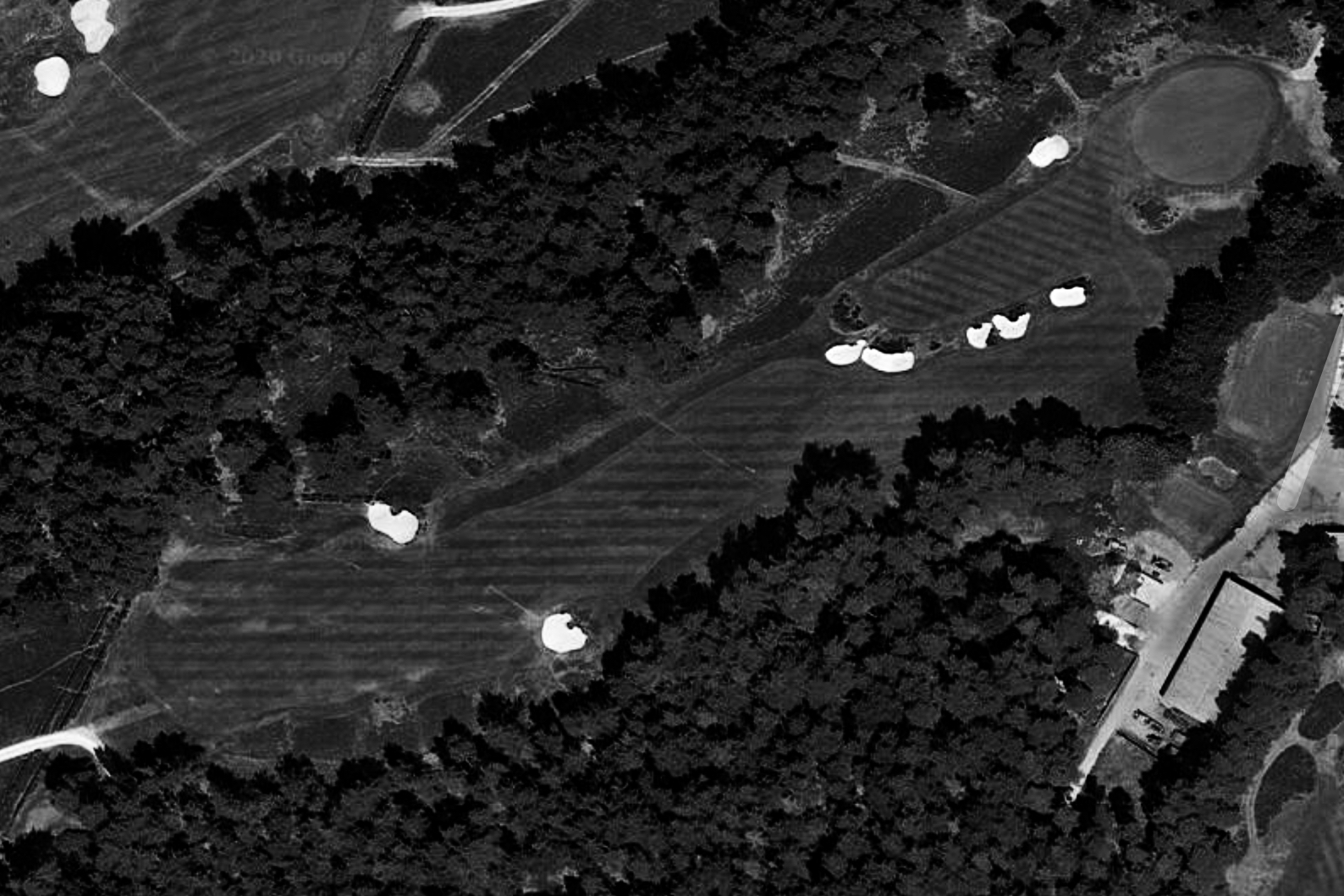
Subtext is also important.
THE ALLEGED ORIGINS
Bahto cites No. 12 at Sunningdale Old as the inspiration for the Bottle, and there’s no reason to blame him for that claim. It’s one of his easier pieces of research, as Macdonald expressed exactly this fact within his 1907 article “The Ideal Golf Course”: The concept for Bottle (which he intended to be the first hole) would be “370 yards, similar to the Bottle hole at Sunningdale, placing deep graduated bunkers in place of the ditch and bunker the green properly.”
So there it is! What right do I, a millennial peon, have to doubt?
Let’s start with the physical differences between the two holes. This argument is shaky by itself; Macdonald rarely set out to create spot-on replicas. He often took concepts and adapted them as he saw fit, and it’s reasonable that he would have done the same with “Bottle.” If this argument is accompanied by additional context, it’s worth noting. Flaws in Macdonald’s suggestion, and in our traditional understanding, are the “additional context.”
The most obvious contrast is the point when a player confronts the diagonal bunker hazard. At NGLA, it occurs off of the tee. At Sunningdale, it comes during the second shot…and even that isn’t guaranteed. A 450-yard Par 4, No. 12 seems intended to play as a half-par during matchplay. Assuming they hit well from the tee, a player can consider crossing the sand hazard to a similar fairway peninsula as NGLA, which in turn could take a heathland bounce up to the green if successful. It’s easy to argue this decisive moment could be flexed to the tee rather than the approach.
Then again, constitutional literalists would argue the nature of the “Bottle” has nothing to do with the diagonal sand hazard.
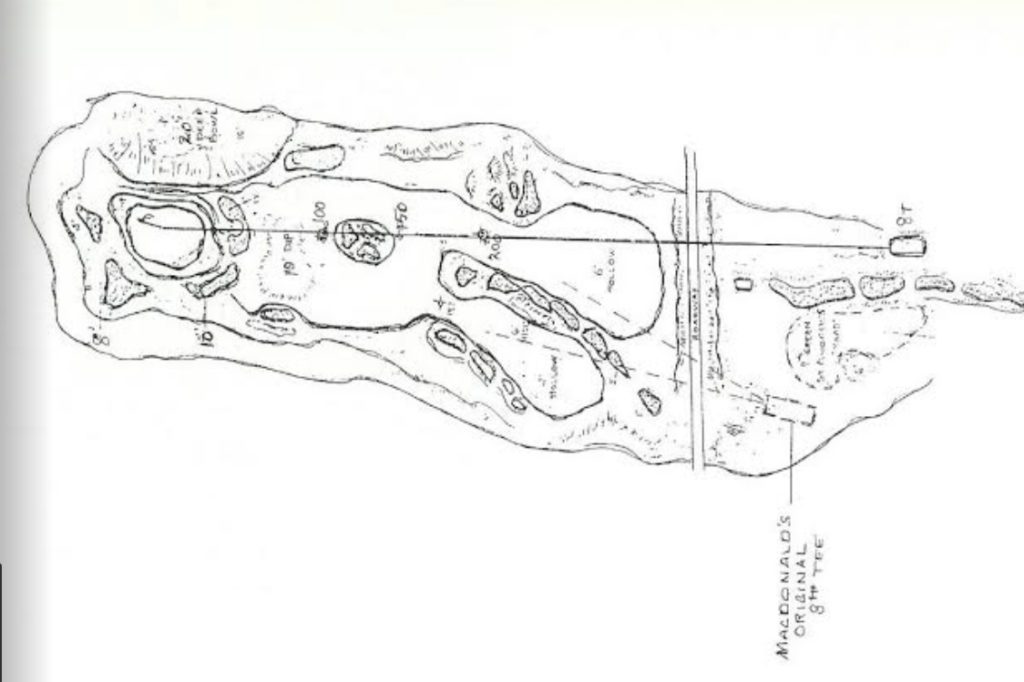
Subtext is also important.
MACDONALD’S WORDS AND MACDONALD’S ACTIONS
As noted above, Macdonald referred to the spiritual predecessor of NGLA’s No. 8 by name as “the Bottle hole at Sunningdale.” The hole was notorious in its time for a fairway that tightened dramatically as it traveled away from the tee, prompting most hitters to rely on a smaller club when playing their first. As Bernard Darwin noted in Golf Courses of The British Isles, “the prudent man generally takes a cleek or a spoon from the tee, and even then breathes a fervent thanksgiving if his ball lies clear, since the fairway narrows down to a horribly small point.”
This effect is the “Bottle” or “Bottle-Neck” described by Macdonald and others of the time. Aligning these facts with Macdonald’s testimony, more modern historians have all but written the diagonal hazard out of the definition of “Bottle.”
Many sources — including Graves and Cornish’s Classic Golf Hole Design — claim “Bottle” describes a fairway that narrows as a fairway heads away from the tee. This does indeed look like a bottle…and it also looks like the rightward fairway in Macdonald’s original sketches of NGLA No. 8. But it doesn’t account for the more risky fairway that comes with every other “Bottle” hole designed by Macdonald and his followers (Essex County Country Club, Whippoorwill Club, Watchung Valley, etc.).
Macdonald incorporated the “Bottle-Neck” into No. 8, to be sure, but the alternate fairway is a major factor. It’s easy to look at today’s Sunningdale No. 12 and note its split fairway upon approach, rearrange those pieces and create something that looks like NGLA No. 8.
It’s easy with today’s Sunningdale No. 12…but it’s not so simple with the hole Macdonald actually saw.
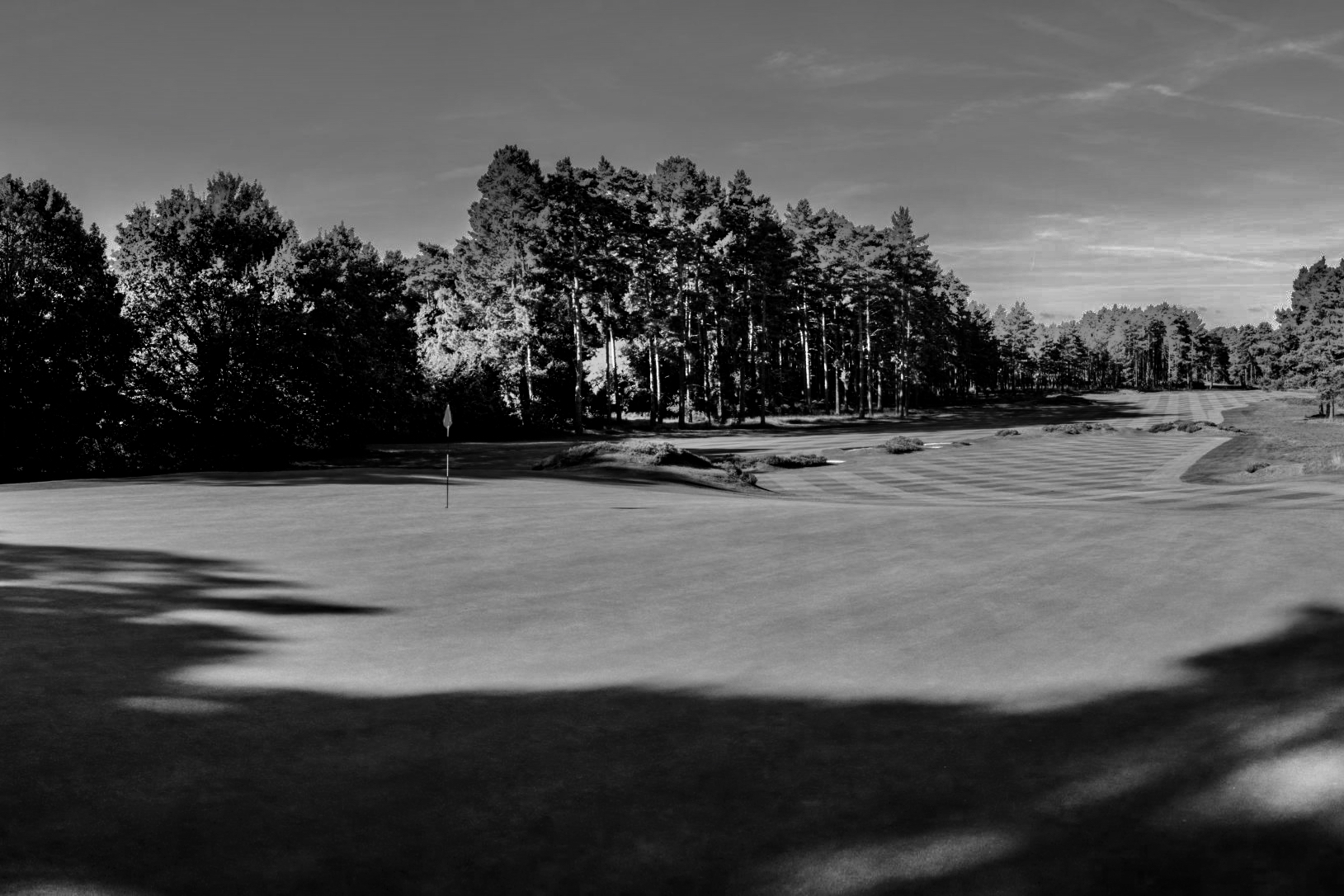
Subtext is also important.
THE BOTTLE THAT WAS AND THE BOTTLE THAT IS
Sunningdale Old was still just “Sunningdale” when Macdonald visited; Harry Colt wouldn’t complete the New course until 1921. Colt is now given a significant chunk of credit for the Old Course, as well. He made a series of prominent changes to now-notable holes, which most claim to be better than Willie Park’s originals. This includes No. 12.
The original No. 12 green sat 70 yards up from its current location, and along the right side of the hole. Colt would eventually extend the hole to make it the half-par monster that it is now, and his green sits at a higher elevation, on the left side of the hole. This move also forced a carry of the diagonal hazard.
The problem with our theory on Macdonald is that he hadn’t actually seen Colt’s version of the hole. His visit came during 1906, and an early history of the club — written between 1933 and 1939 — reports that Colt made his biggest alterations to Old during 1910.
Macdonald constructed NGLA during 1909. Colt’s version of the “Bottle” hole didn’t exist until a year later.
You’ve caught on by now we’re suggesting No. 12 at Sunningdale is not the sole historical basis for No. 8 “Bottle” at NGLA. So what is? All theoretical at this point, but we have a suggestion. The “Bottle-Neck” nature of Park’s No. 12 may have caught Macdonald’s eye but it was another Park hole that more aggressively grabbed his attention…a hole at an entirely different golf course.

Subtext is also important.
HUNTERCOMBE
Sunningdale is considered Harry Colt’s existential headquarters. The equivalent location for Willie Park was Huntercombe Golf Club, where he could tinker and create without the critical commentary of jerks such as Colt. Park opened an 18-hole route during 1901, the same year as Sunningdale, and roughly 25 miles from that location. Those who visit will find something familiar at hole No. 2 (originally No. 7).
The fairway splits about 275 yards out from the back tees (250 from the original tips), with the safer of the two tightening up (as Sunningdale once did). The route formed on the right is similar to the left route at NGLA. It differentiates from Macdonald’s “Bottle” in that playing from the safer, lower fairway may actually offer the better angle…but a bank at the front of the green makes the preferred healthland ground approach more difficult. The riskier fairway will likely offer a more even lie; both fairways tilt left, but the “safer” fairway does so more aggressively. From the right, players can roll onto the green and allow gravity to take it closer to the flag on this heavily slanted green (one of many fierce greens at the club, in Park’s signature style). That this desired fairway sits significantly higher than the lesser makes its value similar to that of the risky road at NGLA.
The more interesting feature is the trench that separates the two. Huntercombe features a relative lack of bunkers compared to Sunningdale, relying often on deep, distinctive grass bunkers the club refers to as “pots.” That term doesn’t quite describe Park’s constructed trench at, but its deep sand-less nature certainly persists. The effect is indisputably similar to that of the diagonal hazard at NGLA (albeit even tougher to reach from the tee, for Park’s era).

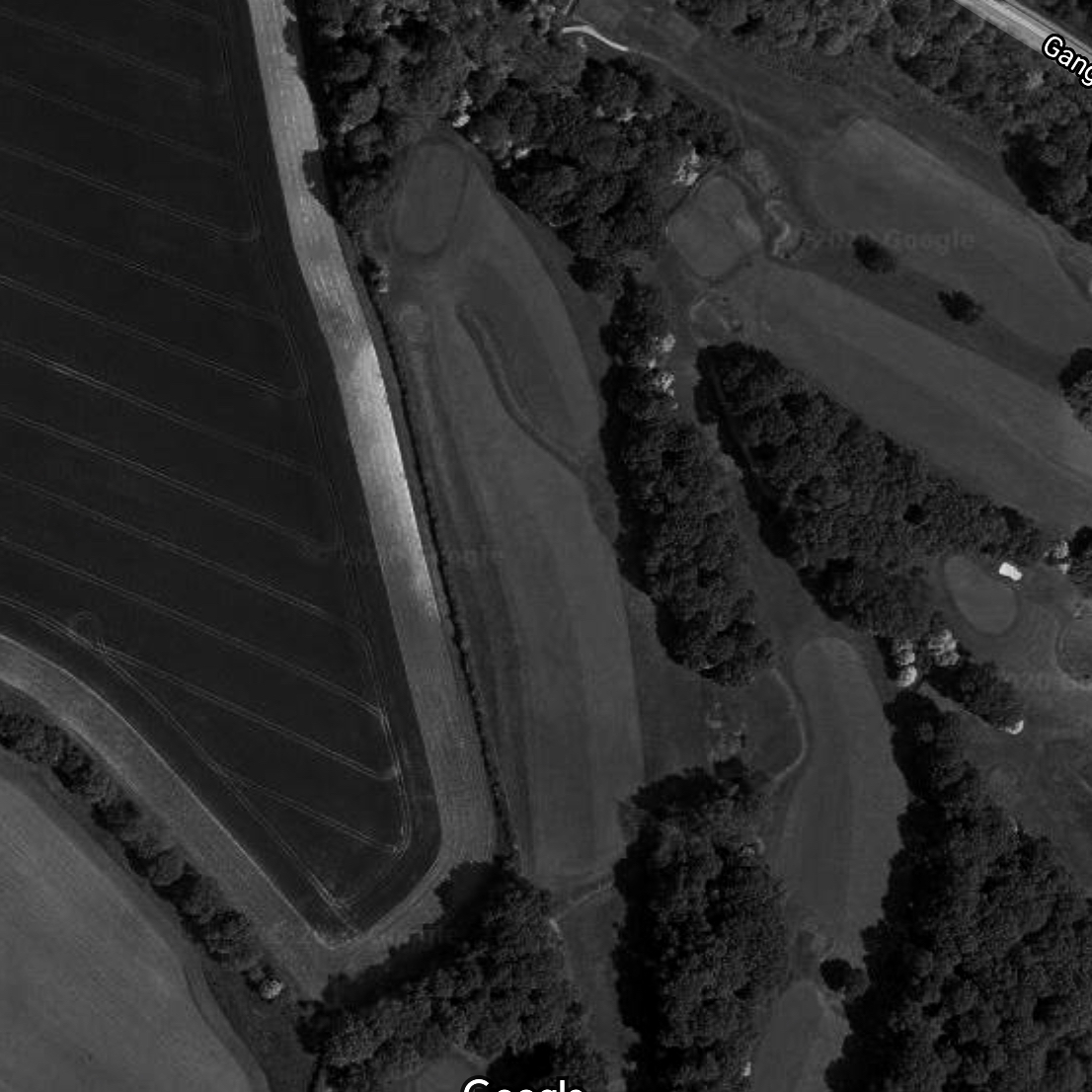
It brings to mind another part of Macdonald’s quote on the origins of “Bottle”: “placing deep graduated bunkers in place of the ditch.” There may be something I’m missing from the original design at Sunningdale Old…but what ditch is Macdonald referring to? No. 2 at Huntercombe certainly has a ditch to qualify.
The issue, of course, is whether Macdonald even saw Huntercombe. He obviously saw Sunningdale, but his writing doesn’t touch on whether he made the jaunt over to Park’s other prize heathland course. In a bind to make this theory worth something, we reached out to Huntercombe general manager Marcus Lovelock.
He got back with an entry from May 9, 1906: Member Cecil Hutchinson had signed in W.R. Farquhar from Sandwich (Royal St. George’s)…and “C.B. Macdonald Garden City U.S.A.”
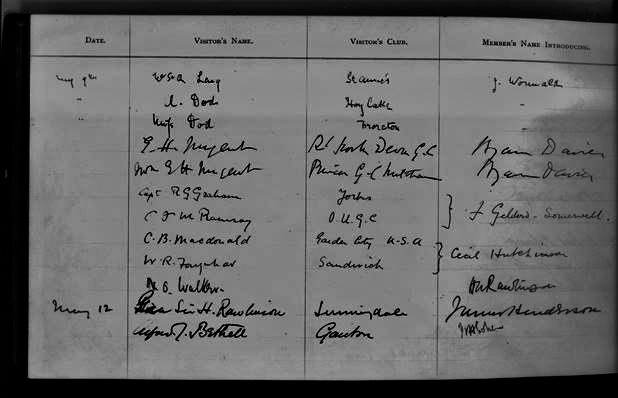
Subtext is also important.
CONCLUSION
What does this definitively prove? Not much. Disproving a dead man’s opinion on his own art is a losing battle. But it’s worth considering — again, with context — that there may be selective misremembering on Macdonald’s part.
In no way does this completely remove No. 12 at Sunningdale as a template for NGLA No. 8. After all, Macdonald mentions the concept being around 370 yards in length, which is nearer to Park’s work at Sunningdale than the then-396-yarder at Huntercombe. But it’s also not unlikely that Macdonald grabbed multiple influences for this concept. He described his “Narrows” template as a “composite first shot of the 14th or Perfection at North Berwick, with green and bunker guards like the 15th at Muirfield.”
Unfortunately, he left no such hint here. Sigh.
Our only advice from this, to both golf course architecture aficionados and anyone exploring eras long forgotten, is to be wary of all we in the present claim to be true. Keep your eyes open, and your mind as well.